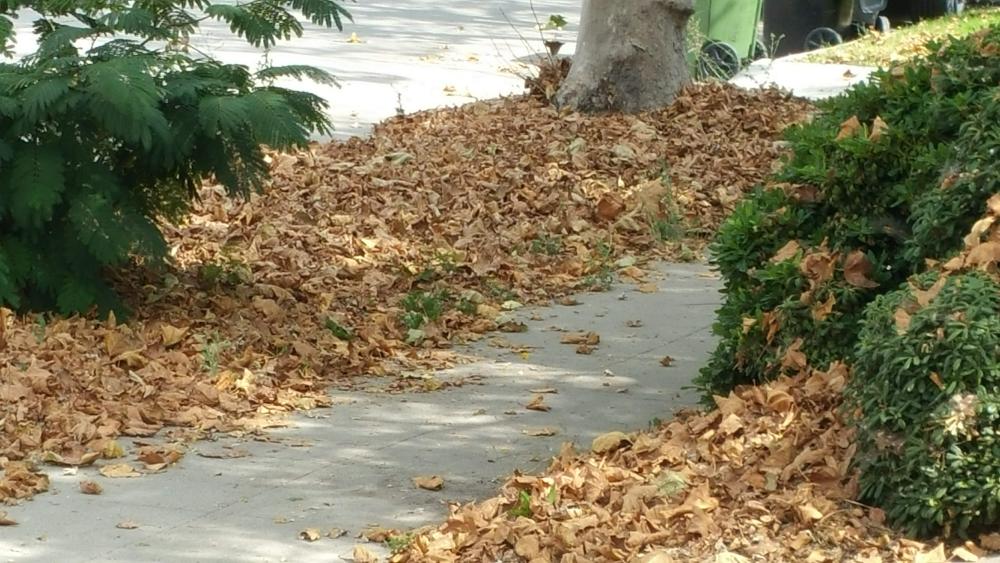
As Buzz readers know, we write a lot about our local trees. But it seems like there’s always more to learn…and more great information to pass on to our readers.
After we ran a story last week about local trees dropping their leaves after being stressed by the recent heatwave, La Brea-Hancock Homeowners’ Association president Tammy Rosato came home from a vacation to find the trees in her yard were following suit. So she called arborist Nick Araya, from TreeCareLA, to find out more about what was happening with the neighborhood trees, and how to further protect them from threats such as heat and pests. And when she invited the Buzz to tag along for the session, we couldn’t resist.
The street trees in front of Rosato’s house, and along most of her block, are London Planes, a type of Sycamore. And Araya confirmed that yes, the trees on Rosato’s block – where the brown, fallen leaves are several inches deep and it now looks like late fall instead of mid-summer – are dropping their leaves because of the recent heat.
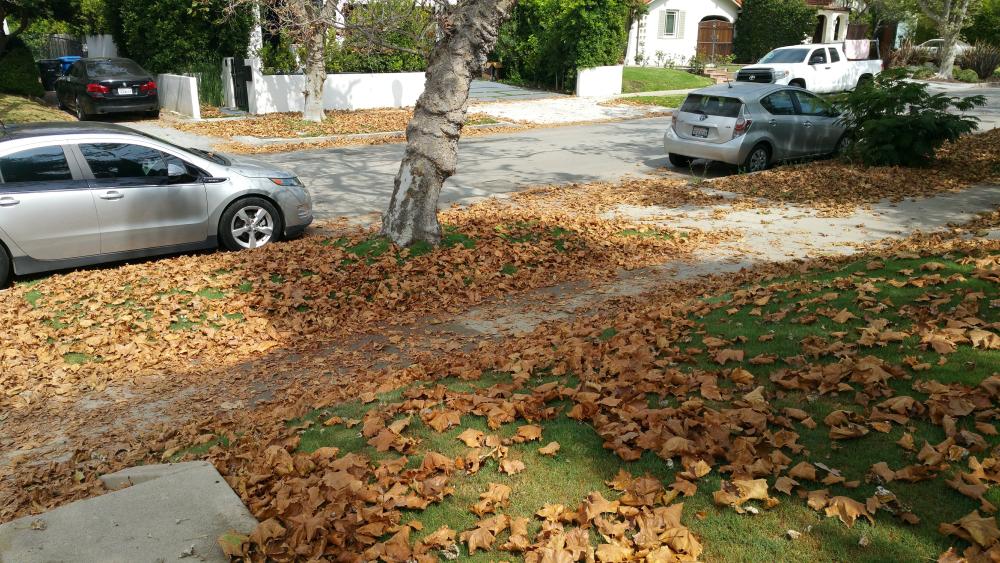
And it’s not just the Sycamores – other types of trees are feeling the heat stress, too.
When I asked Araya about an avocado tree that’s dropping its leaves, but holding onto its maturing fruit, and a lemon tree that’s dropping its fruit but holding most of its leaves, Araya said both patterns are heat related…and opposite examples of trees trying to conserve their resources to put more energy into basic survival. Overall, however, he said citrus trees are “smarter” than avocados, because leaves are more important than fruit when it comes to the tree’s long-term survival. So dropping fruit is a better survival strategy than dropping leaves when it gets too hot. For avocados, or other trees that seem to have things backward – holding onto energy-sucking fruit and dropping energy-producing leaves – Araya recommended picking anywhere from 50-100% of the tree’s immature fruit, to help it put resources back into leaf production.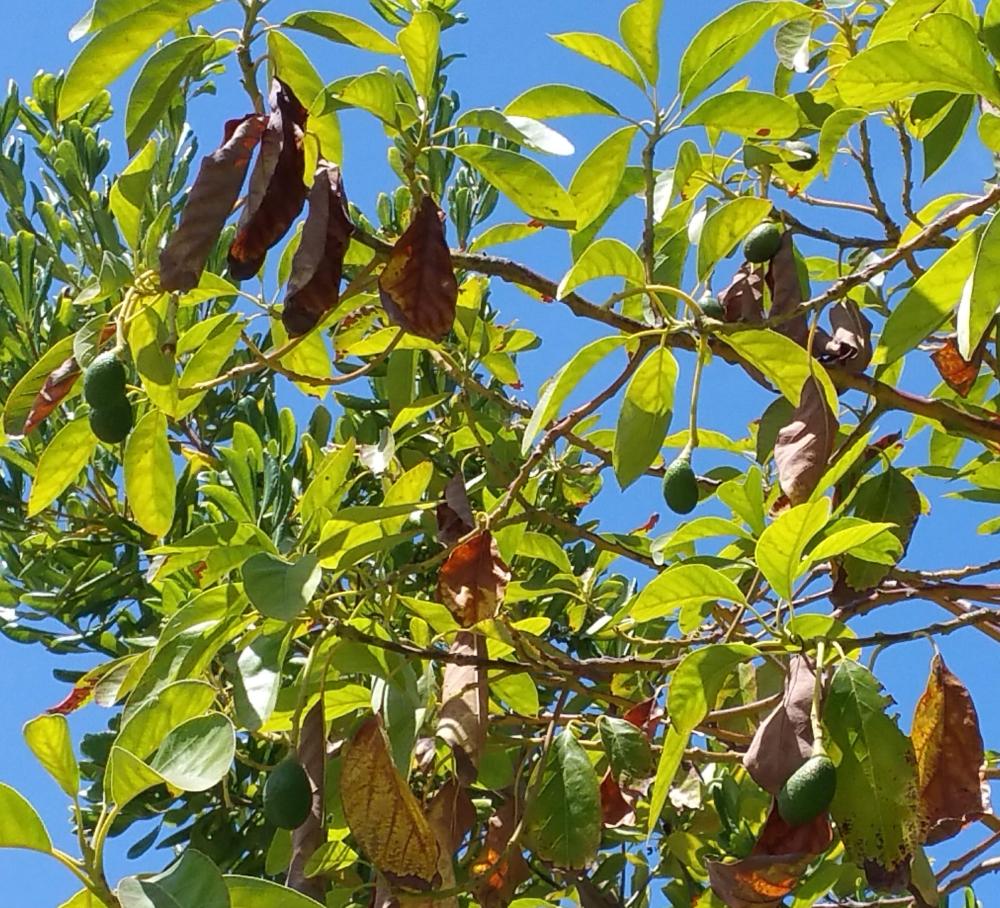
Also, Araya noted that it’s best for overall tree health during the hot summer months to trim trees as little as possible, and to forego most cosmetic trimming. In fact, he said he “prescribes” only trimming fully dead branches, or branches that are in danger of falling or blocking something important. Too much trimming, he said, especially during hot periods, can add more stress to the already struggling tree, harming rather than helping it.
But the heat isn’t the only tree stressor at work at the moment.
Araya invited us to look a bit closer at the fallen leaves on Rosato’s block, and showed us a shaggy white fungus on some of the fallen leaves. The fungus, Araya said, is a result of the tree getting too much moisture, either from too much watering, too much humidity in the air, or both. (And yes, it’s been very humid for the last couple of weeks.)
An even bigger threat, however, Araya said, are pests – especially several kinds of bark beetles now threatening many of our trees, especially Sycamores. Bark beetles, including the notorious polyphagus shot-hole borer, burrow under the tree’s bark and eat the layer just underneath that helps carry water through the tree. When water can no longer flow through the tree, the leaves may turn a distinctive orange color and drop…and the tree itself will eventually die.
Araya showed us some telltale “wet” patches on several tree trunks on Rosato’s block (he calls them “the mark of the beast”), which are evidence of a fungus introduced by the shot-hole borers when they burrow into a tree.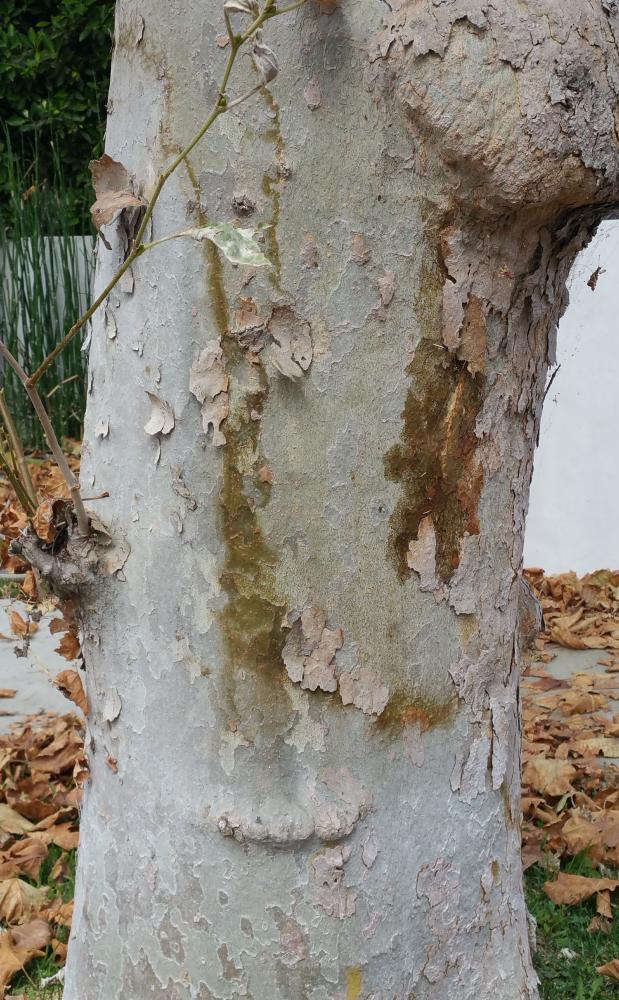
He also showed us how to chip away a bit of bark from the wet patch to reveal the tell-tale “shot-hole” where the beetle entered.


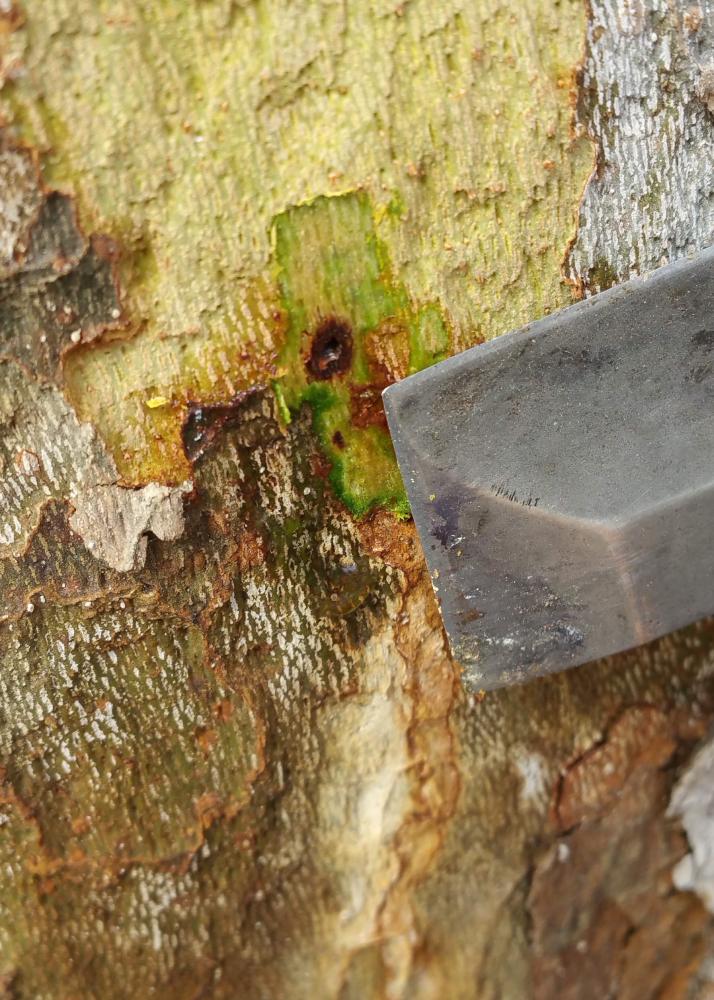
The bad news is that once infected by bark beetles, Araya said, it’s hard to save a tree, especially if the infestation has really taken hold. Also, the beetles will move from tree to tree, often damaging many trees in the same yard or block. And once a beetle enters a tree, even if it dies or goes away, the hole remains, making it easier for other beetles to enter.
But Araya said the good news is that trees can be inoculated against bark beetle infestations, by injecting chemicals that deter the insects. It needs to be done, however, before or very soon after evidence of an infestation is discovered…and the inoculation won’t help if it’s done after the infection has spread too far. Araya says the presence of just one or two wet patches on a tree trunk can mean the infection is still minor, and the tree can be saved…but the presence of many of the marks on one tree probably means it’s too late to save it.
“It’s kind of like [human] vaccinations,” Araya said. “If every third person doesn’t do it, the beetles get set up” and infections can run rampant. (This is already happening in may areas, where some experts estimate more than a third of the city’s trees could be lost to such infections.) Also, Araya cautioned, inoculating trees against bark beetle infections is similar to vaccinating humans against disease – it’s important not only to vaccinate your own family, but make sure as many people (or trees) as possible in the community are vaccinated, to create a “herd immunity” that helps to protect the most vulnerable individuals. If enough trees are not inoculated, he said, those that are will be the last to go in a major epidemic, but even they, too, will succumb eventually if all the other trees in the neighborhood have not been treated.
So Araya urges neighbors to get together to inspect their trees, and to vaccinate as many trees as possible, block by block, to help prevent infestations and save as many of the community’s trees as possible. “The trees in your neighborhood directly affect your property value,” Araya says. So “we all have something to gain by keeping things looking good.”
Finally, for those of us with those sensible lemon trees, now dropping lots of fruit to make survival during the hot summer months possible, you don’t have to just make endless pitchers of lemonade (although it does taste great in this weather). Araya recommends putting the fallen fruit to use by making salt-preserved lemons, a simple procedure using just lemons, salt and a canning jar. Here’s a procedure similar to the one he described: https://toriavey.com/how-to/how-to-make-preserved-lemons/ Enjoy!

